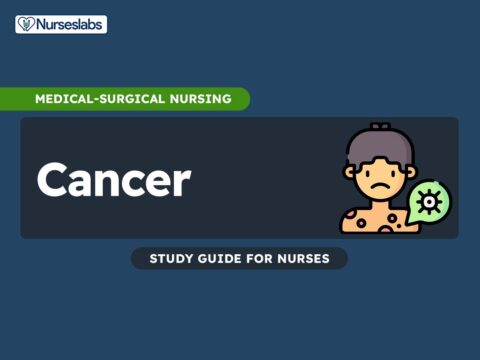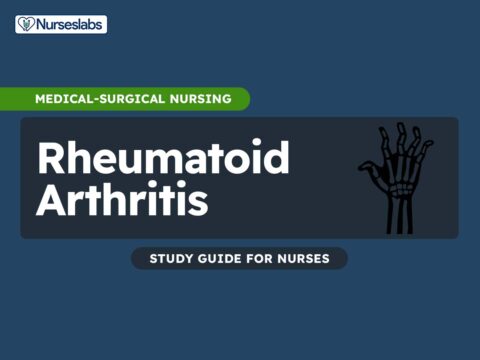Kaye went on a picnic with her friends at the beach. Everyone brought food and shared them for lunch. Moments after biting off a chunk of sandwich, Kaye went dizzy and complained of severe shortness of breath. IT turned out that the sandwich is a peanut butter and jelly ensemble, and Kaye is allergic to peanuts. She was immediately rushed to the emergency department and was diagnosed with anaphylactic shock.
What is Anaphylactic Shock?
Anaphylactic shock occurs rapidly and is life-threatening.
- Anaphylactic shock is a systemic, type I hypersensitivity reaction that often has fatal consequences.
- Anaphylaxis causes the immune system to release a flood of chemicals that can cause a person to go into shock.
Pathophysiology
Anaphylaxis occurs in an individual after reexposure to an antigen to which that person has produced a specific IgE antibody.
- Reexposure. Upon reexposure to the sensitized allergen, the allergen may cross-link the mast cell or basophil surface-bound allergen-specific IgE resulting in cellular degranulation as well as de novo synthesis of mediators.
- Binding. Immunoglobulin E (IgE) binds to the antigen (the foreign material that provokes the allergic reaction).
- Activation. Antigen-bound IgE then activates FcεRI receptors on mast cells and basophils.
- Inflammatory mediators release. This leads to the release of inflammatory mediators such as histamine.
- Histamine release. Many of the signs and symptoms of anaphylaxis are attributable to binding of histamine to its receptors; binding to H1 receptors mediates pruritus, rhinorrhea, tachycardia, and bronchospasm.
- Prostaglandin D2. Prostaglandin D2 mediates bronchospasm and vascular dilatation, principle manifestations of anaphylaxis.
- Leukotriene C4. Leukotriene C4 is converted into LTD4 and LTE4, mediators of hypotension, bronchospasm, and mucous secretion during anaphylaxis in addition to acting as chemotactic signals for eosinophils and neutrophils.
Statistics and Incidences
Anaphylaxis occurs worldwide and in different ages.
- Worldwide, 0.05–2% of the population is estimated to experience anaphylaxis at some point in life.
- It occurs most often in young people and females.
- Of people who go to a hospital with anaphylaxis in the United States about 0.3% die.
- According to a peer-reviewed study, anaphylaxis very likely occurs in nearly 1 in 50 Americans (1.6%).
- Researchers also found that 13% of cases of anaphylaxis occur at hospitals or clinics, 6.4% at a relative’s or a friend’s home, 6.1% in the workplace, 6.1% in the restaurant, and 2.6% at school.
Causes
Allergy symptoms aren’t usually life-threatening, but a severe allergic reaction can lead to anaphylaxis.
- Food allergies. The most common anaphylaxis triggers in children are food allergies, such as to peanuts, and tree nuts, fish, shellfish and milk.
- Medication allergies. Certain medications, including antibiotics, aspirin and other over-the-counter pain relievers, and the intravenous (IV) contrast used in some imaging tests.
- Insect allergies. Stings from bees, yellow jackets, wasps, hornets and fire ants.
- Latex allergy. Latex allergy develops after many previous exposures to latex.
Clinical Manifestations
An anaphylactic reaction produces the following symptoms:
- Anxiety. The first symptoms usually include a feeling of impending doom or fright.
- Skin reactions. Skin reactions such as hives, itching, and flushed or pale skin follow.
- Shortness of breath. Constriction of the airways and a swollen tongue or throat could cause wheezing and troubled breathing.
- Hypotension. A low blood pressure occurs as one of the major symptoms of shock.
- Tachycardia. The heart compensates through pumping faster and trying to deliver blood to all body systems.
- Dizziness. The patient may feel dizzy which could lead to fainting.
Prevention
Because anaphylactic shock occurs in patients already exposed to an antigen and who have developed antibodies to it, it can often be prevented.
- Avoid exposure to allergens. Teach the patient to avoid exposure to known allergens, may it be food, drug, or an insect bite.
- Desensitization. If a patient must receive a drug to which he’s allergic, prevent a severe reaction by making sure he receives careful desensitization with gradually increasing doses of the antigen or advance administration of steroids.
- Monitoring. Closely monitor a patient undergoing diagnostic tests that use radiographic contrast media, such as excretory urography, cardiac catheterization, and angiography.
Complications
The complications of anaphylactic shock include:
- Respiratory obstruction. The trachea may close up due to severe inflammation which could result to respiratory obstruction.
- Systemic vascular collapse. Sudden loss of blood flow to the brain and other organs could cause systemic vascular collapse.
Assessment and Diagnostic Findings
Because anaphylaxis is primarily a clinical diagnosis, laboratory studies are not usually required and are rarely helpful.
- Histamine and tryptase assessment. If a patient is seen shortly after an episode, plasma histamine or urinary histamine metabolites, or serum tryptase measurements may be helpful in confirming the diagnosis.
- 5-hydroxyindoleacetic acid levels. If carcinoid syndrome is considered, urinary 24-hour 5-hydroxyindoleacetic acid levels should be measured.
- Testing for food allergy. If the patient’s medical history and physical examination findings suggest a possible association with food ingestion, percutaneous (puncture) food allergen–specific skin tests and/or in vitro–specific IgE tests (eg, radioallergosorbent assay test [RAST] or ImmunoCAP IgE tests [Phadia AB; Uppsala, Sweden]) can be performed, with an understanding that both false-positive and false-negative results may occur.
- Testing for medication allergy. If the patient’s history suggests a penicillin etiology and the reagents are available, skin testing for penicillin should be performed with the appropriate positive and negative controls.
- Testing for suspected insect bites or sting. If the patient’s history suggests an insect sting, allergen-specific skin testing to Hymenoptera venoms should be performed.
Medical Management
Treatment of anaphylactic shock include:
- Remove antigen. Removing the causative antigen such as discontinuing an antibiotic agent could stop the progression of shock.
- Administer medications. Administer medications that restore vascular tone and provide emergency support of basic life functions.
- Cardiopulmonary resuscitation. If cardiac arrest and respiratory arrest are imminent or have occurred, cardiopulmonary resuscitation is performed.
- Endotracheal intubation. Endotracheal intubation or tracheostomy may be necessary to establish an airway.
- Intravenous therapy. IV lines are inserted to provide access for administering fluids and medications.
Pharmacologic Therapy
Medications used for a patient at risk or under anaphylactic shock are:
- Epinephrine. Epinephrine is given for its vasoconstrictive reaction; for emergency situations, an immediate injection of 1:1, 000 aqueous solution, 0.1 to 0.5 ml, repeated every 5 to 20 minutes is given.
- Diphenhydramine. Diphenhydramine (Benadryl) is administered to reverse the effects of histamine, thereby reducing capillary permeability.
- Albuterol. Albuterol (Proventil) may be given to reverse histamine-induced bronchospasm.
Nursing Management
The nurse has an important role in preventing anaphylactic shock.
Nursing Assessment
Communication is an essential part of assessment.
- Assess any kind of allergy. The nurse must assess all patients for allergies or previous reactions to antigens.
- Assess patient’s knowledge. The nurse must also assess the patient’s understanding of previous reactions and steps taken by the patient and the family to prevent further exposure to antigens.
- New allergies. When new allergies are identified, the nurse advises the patient to wear or carry identification that names the specific allergen or antigen.
Nursing Diagnosis
Based on the assessment data, the nursing diagnoses appropriate for the patient are:
- Impaired gas exchange related to ventilation perfusion imbalance.
- Altered tissue perfusion related to decreased blood flow secondary to vascular disorders due to anaphylactic reactions.
- Ineffective breathing pattern related to the swelling of the nasal mucosa wall.
- Acute pain related to gastric irritation.
- Impaired skin integrity related to changes in circulation.
Nursing Care Planning and Goals
Main Article: 4 Anaphylactic Shock Nursing Care Plans
The major goals for a patient with anaphylactic shock are:
- Client will maintain an effective breathing pattern, as evidenced by relaxed breathing at normal rate and depth and absence of adventitious breath sounds.
- Client will demonstrate improved ventilation as evidenced by an absence of shortness of breath and respiratory distress.
- Client will display hemodynamic stability, as evidenced by strong peripheral pulses; HR 60 to 100 beats/min with regular rhythm; systolic BP within 20 mm Hg of baseline; urine output greater than 30 ml/hr; warm, dry skin; and alert, responsive mentation.
- Client and significant others will verbalize understanding of allergic reaction, its prevention, and management.
- Client and significant others will verbalize understanding of need to carry emergency components for intervention, need to inform health care providers of allergies, need to wear medical alert bracelet/necklace, and the importance of seeking emergency care.
Nursing Interventions
Nursing interventions for the patient are:
- Monitor client’s airway. Assess the client for the sensation of a narrowed airway.
- Monitor the oxygenation status. Monitor oxygen saturation and arterial blood gas values.
- Focus breathing. Instruct the client to breathe slowly and deeply.
- Positioning. Position the client upright as this position provides oxygenation by promoting maximum chest expansion and is the position of choice during respiratory distress.
- Activity. Encourage adequate rest and limit activities to within client’s tolerance.
- Hemodynamic parameters. Monitor the client’s central venous pressure (CVP), pulmonary artery diastolic pressure (PADP), pulmonary capillary wedge pressure, and cardiac output/cardiac index.
- Monitor urine output. The renal system compensates for low blood pressure by retaining water, and oliguria is a classic sign of inadequate renal perfusion.
Evaluation
Expected patient outcomes include:
- Client maintained an effective breathing pattern.
- Client demonstrated improved ventilation.
- Client displayed hemodynamic stability.
- Client and significant others verbalized understanding of allergic reaction, its prevention, and management.
- Client and significant others verbalized understanding of need to carry emergency components for intervention, need to inform health care providers of allergies, need to wear medical alert bracelet/necklace, and the importance of seeking emergency care.
Discharge and Home Care Guidelines
Upon discharge, the patient and family need to learn about the following:
- Emergency medications. The nurse should provide information about emergency medications and plans that should be considered should a crisis reoccur.
- Precipitating factors. The nurse must assist the client and/or family in identifying factors that precipitate and/or exacerbate crises.
Documentation Guidelines
The focus of documentation include:
- Assessment findings including respiratory rate, character of breath sounds; frequency, amount, and appearance of secretions; presence of cyanosis; laboratory findings; and mentation level.
- Conditions that may interfere with oxygen supply.
- Pulses and BP, including above and below affected area.
- Client’s description of response to pain, specifics of pain inventory, expectations of pain management, and acceptable level of pain.
- Prior medication use.
- Plan of care, specific intervention, and who is involved in planning.
- Teaching plan.
- Client’s responses to treatment, teaching, and actions performed.
- Attainment or progress towards desired outcome.
- Modifications to plan of care.
- Long-term needs.
See Also
Other posts from the site you may like:





































Leave a Comment